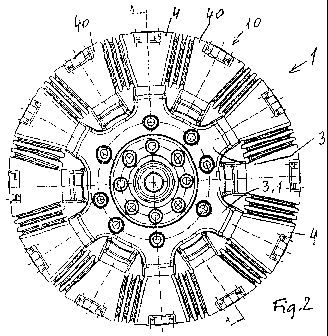Some of the information on this Web page has been provided by external sources. The Government of Canada is not responsible for the accuracy, reliability or currency of the information supplied by external sources. Users wishing to rely upon this information should consult directly with the source of the information. Content provided by external sources is not subject to official languages, privacy and accessibility requirements.
Any discrepancies in the text and image of the Claims and Abstract are due to differing posting times. Text of the Claims and Abstract are posted:
| (12) Patent Application: | (11) CA 2787519 |
|---|---|
| (54) English Title: | A COUPLING APPARATUS WITH TWO COUPLINGS |
| (54) French Title: | ACCOUPLEMENT ELASTIQUE |
| Status: | Deemed Abandoned and Beyond the Period of Reinstatement - Pending Response to Notice of Disregarded Communication |
| (51) International Patent Classification (IPC): |
|
|---|---|
| (72) Inventors : |
|
| (73) Owners : |
|
| (71) Applicants : |
|
| (74) Agent: | |
| (74) Associate agent: | |
| (45) Issued: | |
| (86) PCT Filing Date: | 2010-11-06 |
| (87) Open to Public Inspection: | 2011-07-28 |
| Availability of licence: | N/A |
| Dedicated to the Public: | N/A |
| (25) Language of filing: | English |
| Patent Cooperation Treaty (PCT): | Yes |
|---|---|
| (86) PCT Filing Number: | PCT/EP2010/006763 |
| (87) International Publication Number: | WO 2011088860 |
| (85) National Entry: | 2012-07-19 |
| (30) Application Priority Data: | ||||||
|---|---|---|---|---|---|---|
|
The invention relates to an elastic coupling, comprising a primary part; comprising a secondary part; the primary part and secondary part being rotatable relative to each other to a limited extent against the force of springs; the springs comprising plate-shaped spring plates made of rubber-elastic material; support plates being arranged between the spring plates; a plurality of carriers for carrying the spring plates and the support plates being distributed over the circumference of the coupling. The invention is characterized by the following features: each carrier has the contour of a wedge tapered radially inward, as viewed from above along the coupling axis; a packet of alternating spring plates and support plates is located on both sides of each carrier, said packets being adjacent to the two wedge surfaces of the carrier.
L'invention concerne un accouplement élastique comprenant une partie primaire et une partie secondaire. La partie primaire et la partie secondaire pouvant être entraînées en rotation de façon limitée l'une par rapport à l'autre à l'encontre de la force de ressorts, les ressorts comprenant des plaques élastiques en forme de plaque constituées d'un matériau en caoutchouc élastique. Des plaques d'appui sont disposées entre les plaques élastiques. Plusieurs supports destinés à soutenir les plaques élastiques et les plaques d'appui sont répartis sur la périphérie de l'accouplement. L'invention est caractérisée en ce que : chaque support présente - dans une vue en élévation de l'axe d'accouplement- le contour d'un coin se rétrécissant radialement vers l'intérieur ; de part et d'autre de chaque support se situe de manière adjacente aux deux surfaces cunéiformes du support un paquet de plaques élastiques et de plaques d'appui en alternance.
Note: Claims are shown in the official language in which they were submitted.
Note: Descriptions are shown in the official language in which they were submitted.

2024-08-01:As part of the Next Generation Patents (NGP) transition, the Canadian Patents Database (CPD) now contains a more detailed Event History, which replicates the Event Log of our new back-office solution.
Please note that "Inactive:" events refers to events no longer in use in our new back-office solution.
For a clearer understanding of the status of the application/patent presented on this page, the site Disclaimer , as well as the definitions for Patent , Event History , Maintenance Fee and Payment History should be consulted.
| Description | Date |
|---|---|
| Revocation of Agent Requirements Determined Compliant | 2020-09-01 |
| Revocation of Agent Requirements Determined Compliant | 2018-04-27 |
| Inactive: Adhoc Request Documented | 2018-01-30 |
| Application Not Reinstated by Deadline | 2015-11-06 |
| Time Limit for Reversal Expired | 2015-11-06 |
| Deemed Abandoned - Failure to Respond to Maintenance Fee Notice | 2014-11-06 |
| Inactive: Cover page published | 2012-10-10 |
| Inactive: IPRP received | 2012-09-18 |
| Inactive: Notice - National entry - No RFE | 2012-09-07 |
| Inactive: IPC assigned | 2012-09-06 |
| Inactive: First IPC assigned | 2012-09-06 |
| Application Received - PCT | 2012-09-06 |
| National Entry Requirements Determined Compliant | 2012-07-19 |
| Application Published (Open to Public Inspection) | 2011-07-28 |
| Abandonment Date | Reason | Reinstatement Date |
|---|---|---|
| 2014-11-06 |
The last payment was received on 2013-10-25
Note : If the full payment has not been received on or before the date indicated, a further fee may be required which may be one of the following
Please refer to the CIPO Patent Fees web page to see all current fee amounts.
| Fee Type | Anniversary Year | Due Date | Paid Date |
|---|---|---|---|
| Basic national fee - standard | 2012-07-19 | ||
| MF (application, 2nd anniv.) - standard | 02 | 2012-11-06 | 2012-10-25 |
| MF (application, 3rd anniv.) - standard | 03 | 2013-11-06 | 2013-10-25 |
Note: Records showing the ownership history in alphabetical order.
| Current Owners on Record |
|---|
| VOITH PATENT GMBH |
| Past Owners on Record |
|---|
| WALTER MISTLBAUER |